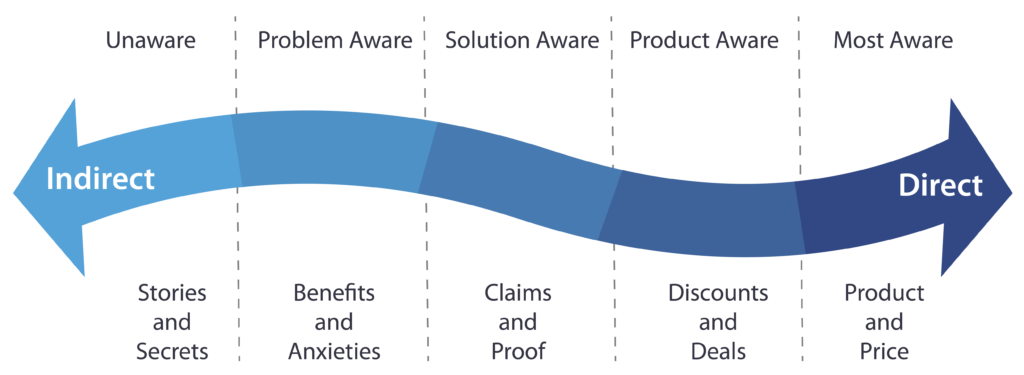You’ve just ordered a pizza. It arrives on time *fist pump*. You can feel it steaming through the cardboard as you carry it over to your laziest lazy chair. You flip back that lid and…
What?! They haven’t sliced it?!
😤
Moral of the story: large masses of dough are unmanageable. Unwieldy. Just like your unsegmented audience.
Slicing up your audience into manageable pieces - segmenting it - allows you to appreciate each segment in its individuality. As a piece separate from the whole, with its own unique characteristics.
And when you segment your audience, you can put those characteristics to work to inform your strategic decision-making, focus your marketing efforts, and boost that all-important bottom line. 🤑
Now whose mouths are watering?
We’ll cover…
- What market segmentation is.
- Why segmenting your audience matters.
- The four main types of segmentation.
- An overview of the segmentation process.
Let’s dig in. 🍴
What is market segmentation?
Market segmentation is the process of splitting up your target market into a set of smaller groups based on shared needs or characteristics. It helps you make more sense of your audience. And studying each segment uncovers new useful information about its members.
Ultimately, you’ll learn more about the emotional needs of each subgroup in your audience and, in turn, shed light on the drivers behind their buying decisions.
The goals of segmentation
One of market segmentation’s goals, then, is a greater understanding of your audience at large. Another is to make clear which sections of your audience you should prioritize your marketing efforts toward for the greatest ROI.
When you understand which segments of your audience are most likely to spend money with you from the get-go, you can focus your efforts on them. You can tailor your advertising, email marketing, or positioning and messaging strategies to boost sales win rates, for example.
So how might this look? Perhaps you tailor an email campaign for mailing list members with the highest open rates on prior emails. Or, you dynamically deliver a different call to action on your blog articles depending on which of your products a website visitor has engaged with most in the past.
Market segmentation lets you deliver content that speaks to the pain points and unmet needs of the individual. In doing so, you’ll more effectively communicate how your product beats competing offers.
Why should you perform market segmentation?
High-tech tracking cookies are everywhere, collecting your data online. The websites you visit most are using this data to deliver personalized advertising and content recommendations based on what you like and dislike. That’s true even if you’ve never explicitly offered that information.
Whether people realize it or not, they’re now only comfortable when they’re shown very relevant content. It’s jarring when you’re shown content that’s not relevant.
People expect personalization
It’s probably happened to you recently. Ever visited Youtube in a Private Browsing tab when you thought you were logged in? There was something odd about those ads, right? Something… off?
If you live in a high-rise apartment, a lawnmower ad just doesn’t make sense. If you’re fresh out of school, an ad for a product that helps your newborn sleep probably feels just as strange.

If that’s you, you probably don’t see those ads at all. In fact, you probably see the same kinds of ads on repeat. Ads relevant to your hobbies, interests, or at the very least your recent searches online. So when you see something that departs from the norm, it ruffles your feathers.
But while tracking cookies are the focus of rising scrutiny and debates around privacy and personal freedom, organizations collect a lot of data that their users and subscribers have genuinely offered during their interactions with the product or brand.
This is where market segmentation comes into play.
Your customers expect personalization, so segmenting your audience and delivering targeted messages is integral to success. But there are ways of doing this without abusing your users’ trust.
Segmentation helps you prioritize
Using market segmentation effectively can give you:
- Fewer wasted marketing efforts.
- Greater ROI on your outputs.
- Higher conversion rates.
- Better customer retention.
- A more informed marketing strategy.
That last one in particular is interesting. Knowing your market segments gives you the option to focus your efforts on one or two very lucrative segments, or to seed as many leads in as many different segments as you can.
Both methods work, but one is more likely to work for you and your use case than the other. Market segmentation can help you decide which is right while helping you prioritize, focus your efforts, and inform your marketing strategy as a whole.

The four primary segment types
There are four primary types of segmentation. Though other, more niche, types of segments exist, the four below will go the furthest towards getting you started with segmentation.
Geographic segmentation
Of all the ways of splitting up your audience, doing so geographically is perhaps the simplest, and is definitely the easiest to understand, so we’ll start here.
Geographic segmentation groups your audience members by their locations around the world. A segment for the USA, a segment for Canada, a segment for the UK, etc.
Or, to narrow the scope, a segment for California, a segment for Colorado, a segment for Idaho, and so on. Broaden the scope, and you’d get a segment for Europe, a segment for North America, another for Eurasia.
Geographic data is also pretty easy to obtain. Every internet user has a publicly available IP address, linked to a physical location. If yours is a physical store, you can segment data by which customers make purchases at particular physical locations around the world.
Demographic segmentation
Segmenting by demographic is more granular than geographic. Details like a user’s:
- Age
- Gender
- Religion
- Income
- Profession
- or education...
... all these can play a part.
Demographic data is a little more difficult to obtain than geographic data if your customers don’t offer it freely but, since it’s more specific, it’s more meaningful.
But how is it useful?
Those with a higher income have different spending habits than those with lower incomes. Those who are older prefer to spend their money on different things than those who are younger.
Those in their mid-teens are unlikely to be looking to buy a house. But, in certain parts of the US, and to families with certain incomes, their parents may well be looking to buy them a car.
Think too of all the generational trends and tropes around. Millennials love their memes. Baby Boomers use tablets. And Gen Z’ers are most likely to use a cell phone as their primary device.
All this information can inform your strategic marketing choices.

Psychographic segmentation
Psychographic segmentation aims to segregate audience portions based on their:
- Ethics and values
- Lifestyle
- Personality
- Political leanings
This information tends to be less easily attainable again than demographic data but, since it centers around beliefs with strong emotional underpinnings, content created to target specific psychographic triggers can be particularly persuasive.
Behavioral segmentation
Behavioral segmentation is great. The data is easily available for any business since you can pull it directly from your marketing funnel.
Observing how leads and prospects have acted within your marketing funnel in the past is data you own outright. And, crucially, anyone who has interacted with your marketing funnel in some way has effectively raised their hand to show you their interest in your product.
Someone that signs up for a free trial, for example, and uses the trial every day for a week, can be targeted very differently in your email messaging from someone who has begrudgingly agreed to a follow-up call from a sales rep.
You'll target someone who's actively using your free trial very differently from someone who has only clicked on one of your paid ads. That's behavioral segmentation.
You might offer the former a discount code for their first month on board with you if they sign up in the next ten days. You might send the latter some quick, impactful points on the key ways your product has offered similar businesses value in the past 12 months.
This data is everywhere and can help you segment your audience by probable stage of awareness, readiness to buy, and other such groupings that deliver huge value to your organization and directly inform you as to what kind of content and messaging you should deliver next.

Those who’ve downloaded an informational asset, like a whitepaper or a playbook, but have never spent any money with you, might be ripe for a custom email campaign aimed at drip-feeding them further value via actionable tips delivered to their inbox a few times a week.
Offering further value to someone less ready to buy like this continues to demonstrate your expertise, authority, and trustworthiness, without asking them to come and find it. In turn, this increases the likelihood of them trusting you, your brand, and your products, moving them along the funnel.
The segmentation process
Ok, so you understand the main four types of market segmentation, you understand what you have to gain from it. How do you actually get on and do it?
Much like in competitive intelligence, customer research, and many other facets of marketing, there are three main steps here:
Gather data
First, you need to gather as much information about your existing audience as possible.
But this data needs to be solid.
Size matters: larger data sets are better
Market segments are born from the data you collect on your audience, and the customers, web visitors, and leads that make up that audience.
The larger this pool is already, the easier a time you’ll have pulling out accurate data.
Small data sets are the bane of many an analyst because they give too much precedence to outliers. Larger data sets dampen the effect of any single data point, cleaning the data and making it easier to spot patterns and trends.
When it comes to your market segments, you want to pull data from a large existing audience. Then you know you’re building your segments from data that accurately reflects the people willing to spend money with you.
Data sources
The following are great sources of segmentation data:
- Original research & outreach (customer interviews, custom surveys, case studies).
- Public, third-party research.
- Your marketing funnel (ad accounts, social media, your website).
- Your analytics and tracking tools.
- Your CRM and other software.
You also want to conduct more general customer research. Make sure going into this process that you’ve spoken to your customers and you understand their needs. What are their pain points? How does your product solve their problems?
Analyze the data
Once you’ve done your customer research and gathered your audience data, you need to analyze it and find the patterns amongst your highest-value customers. If you can identify what those individuals have in common, then you can start to find other commonalities. This can uncover new opportunities for you to target.
Combine macro and microdata
You can combine this knowledge of individual, high-value customers with your knowledge of the wider market and your ideal customer personas.
If you’ve not created them already, ideal customer personas (ICPs) will give you a better theoretical understanding of how your ideal consumer interacts with your products and moves through your funnel.
For example, if one of your ICPs describes a senior sales manager with about 10 years' experience, but more than 80% of your highest-value customers had a junior member of the product marketing team fighting hardest for the adoption of your product, then start producing targeted messaging for junior product marketers.
Combine segments for specificity
Some segments, especially those from demographic or geographic data, are far too broad to be of much use on their own. “Customers in Europe” doesn’t give you much to work with when it comes to personalizing your messaging and content delivery.
French males, aged 25-34, employed full-time and earning €30k-50k a year, combines criteria for a much more useful and specific segment.
Behavioral segments, however, can be of great use all on their own. “Customers who have downloaded an asset in the last 30 days” is a pretty useful segment. Combining explicit and implicit segmentation techniques will also boost the utility of your segments.
Segment by what matters
For real ROI on your segmentation efforts, you need to focus on those segments which have the strongest emotional need for a solution like yours.
When you can identify specific segments, and especially when you can incorporate behavioral data, you get a clear picture of which segments are searching for a product like yours, and which of those are most likely to buy soon.
Focusing your marketing efforts on members of segments like this is sure to drastically improve your return on investment.
Test and tweak
As with any marketing deliverable, it doesn’t stop here.
The world never stands still and new data rolls in all the time. You have to use this new data to continually improve your segments, to make them more accurate and defensible.
A solid understanding of your market segments can inform your business decisions, focus your marketing efforts, and boost sales of your product.
TL;DR
Strapped for time? Or just need a quick summary? We got you! 🤝
👨👨👧👦 Market segmentation is the process of grouping sections of your audience based on shared needs or characteristics.
💅 Audiences are used to personalized content delivery. That makes segmentation critical to the success of your marketing efforts.
🧠 The four main types of market segmentation are geographic, demographic, psychographic, and behavioral.
💪 Behavioral segmentation data is easy for marketers to obtain from their funnels, and is powerful once implemented.
🧑💻 The segmentation process consists of gathering data on your audience and conducting customer research, analyzing that data for patterns, then targeting your content and messaging to the highest-value segments.
🤌 Don’t forget to continually tweak and optimize your content and messaging based on new data about your segments.
What's next?
Looking for your next best decision?
Join our competitive intelligence Slack workspace and rub shoulders with CI's best and brightest. 💪



